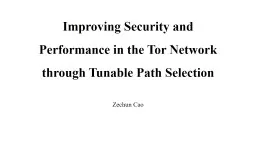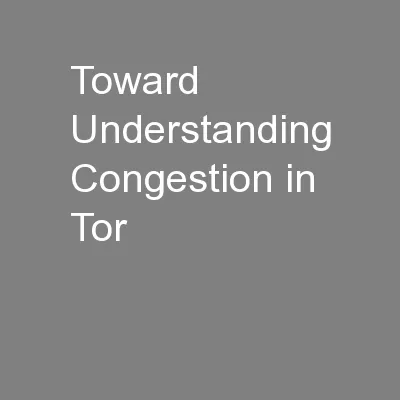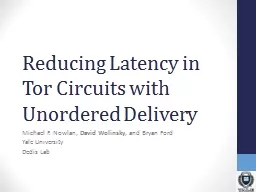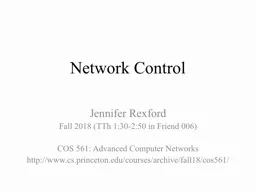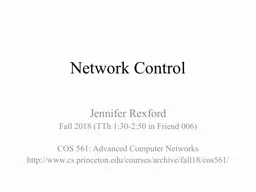PPT-Improving Security and Performance in the Tor Network throu
Author : pasty-toler | Published Date : 2017-06-29
Robin Snader and Nikita Borisov Presented by Zechun Cao Tor Design Proposed Method Bandwidth Measurement Router Selection Algorithm Evaluation and Discussions Overview
Presentation Embed Code
Download Presentation
Download Presentation The PPT/PDF document "Improving Security and Performance in th..." is the property of its rightful owner. Permission is granted to download and print the materials on this website for personal, non-commercial use only, and to display it on your personal computer provided you do not modify the materials and that you retain all copyright notices contained in the materials. By downloading content from our website, you accept the terms of this agreement.
Improving Security and Performance in the Tor Network throu: Transcript
Download Rules Of Document
"Improving Security and Performance in the Tor Network throu"The content belongs to its owner. You may download and print it for personal use, without modification, and keep all copyright notices. By downloading, you agree to these terms.
Related Documents

